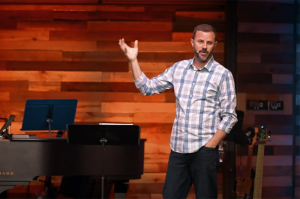Southern Baptist Pastors Hope to Revitalize Hundreds of Churches in Decline
About 800 to 1,000 Southern Baptist congregations cease to exist annually, largely due to a stagnant vision among the leadership and lack of impact within their communities, says a church planting director. However, church leaders say the closures are often the symptom of a greater problem.
"Churches are closing in large part because they have either become disconnected from culture and, or disconnected from Scripture. When this happens, life leaves the church," Joshua Hedger, director of Center for Church Planting at Midwestern Seminary, told The Christian Post.
Although the Baptist convention opened 1,300 new churches last year, Hedger says they are not gaining enough new ground and will rely on church planters to create a movement that will hopefully put an end to dying congregations. The church revitalization process usually involves new leadership taking over a declining church, who then implements a strategy on how to grow the congregation again.
"In some churches, a simple change in leadership and culture takes place," Hedger said. "Some fully shut down and allow a new church to take over their facilities, assets, and people. Others find themselves anywhere between those two extremes."
Dr. Rodney Harrison, a former revitalization pastor says part of the process is also addressing issues that the former leadership of a church did not deal with, such as "problems caused by members who embodied the works of the flesh."
"In these restarts, church discipline has always been a part of the revitalization process. The goal of discipline is restoration, however, since the process is painful, most churches in need of revitalization have not addressed the issue of members behaving badly," Harrison said.
He added, "The revitalization leader will generally need to focus on congregational health before engaging a coordinated outreach effort. Otherwise, the evangelistic efforts are akin to inviting someone who is spiritually in need to a church that is spiritually ill."
John Mark Clifton, pastor of a revitalized church in Kansas City, Mo., told CP that during the restoration process, churches also need to be open to having a younger individual with a fresh perspective lead them.
"In order for this to happen we will have to find ways to equip, empower and coach pastors to go to these churches and likewise these churches will have to be willing to accept a young man who will come with ideas and concepts that are perhaps different than theirs," Clifton said.
In 2012, the Southern Baptist Convention – considered to be the largest Protestant denomination in the country – counted less than 16 million members. It was the fifth year the denomination experienced a large decrease among its members. However, even with membership numbers declining each year, some church leaders object church revitalization, said Harrison.
"Although the material cost is often far less than planting a new church, the emotional and spiritual costs are high, for the aforementioned need for church discipline. For some, the threat of losing members to the rebirthed church is a concern. If a church has grown through transfer growth from the old church, it is understandable that members might return to their old church once health and vitality are restored," Harrison explained.
Clifton said the purpose of implementing a revitalization strategy is to give dying churches options that involve ministering to their communities and finding joy in serving once again.
"Each of these options will require the dying or declining church to change the way it sees itself and the way it conducts its ministry … as we do this, we can witness a real change in the trend of dying and declining churches in North America," Clifton said.




























